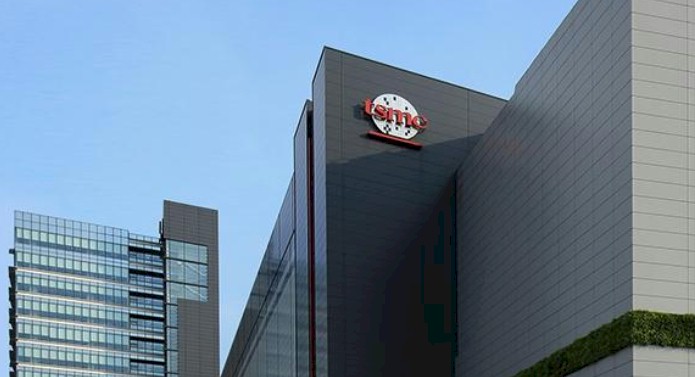Chips Still Down For TSMC With Glimmer Of Hope This Quarter

TSMC has reported a double digit year-on-year plunge in sales, even though it seems the results aren't as bad as analysts anticipated. The chipmaker expects business to pick up again in the coming months.
The Taiwanese titan reported revenue in US dollars for calendar Q2 of $15.68 billion, a drop of 13.7 percent from the same period last year and down 6.2 percent from the $16.72 billion it generated in during Q1.
That previous quarter represented the first revenue decline in four years for the world's largest semiconductor contract manufacturer, but was broadly in line with TSMC's own forecasts. This time it had estimated revenue would land somewhere between $15.2 billion and $16 billion so its reported results are just to the higher end of that range.
TSMC is still rocked by the downturn in demand for semiconductors due to global economic woes, according to the company's VP and CFO Wendell Huang, who said that he expected to see something of an upturn in commercial fortunes in the current (third) quarter.
"Our second quarter business was impacted by the overall global economic conditions, which dampened the end market demand, and led to customers' ongoing inventory adjustment," Huang explained.
"Moving into third quarter 2023, we expect our business to be supported by the strong ramp of our 3nm technologies, partially offset by customers' continued inventory adjustment."
TSMC started mass production of 3nm chips right at the very end of last year, and as it ramps up volume, the company introduced more variations during this year, including enhanced nodes that offer speed improvements, increased density, or are optimized for the automotive market.
Huang said that despite the industry downturn, TSMC continues to invest in R&D to support its N3 (3nm) and N2 (2nm) development. The company has previously said it expects to have 2nm chips in mass production by 2025.
For Q2, TSMC said that 5nm process technology accounted for 30 percent of its total wafer revenue, while 7nm represented 23 percent. More mature nodes still comprise a sizable fraction, with 16nm and 28nm both at 11 percent and 40/45nm and 65nm each on 7 percent.
TSMC said its capex expenditure during Q2 amounted to $8.17 billion, and for the whole of 2023, Huang said he now expects the capital budget to end up towards the lower end of its range, between $32 billion and $36 billion.
- Samsung 'closing the gap' with TSMC on 3nm, 4nm
- Now Foxconn hopes to lure TSMC, Japan's TMH into India chip fab pact – report
- Us, hacked by LockBit? No, says TSMC, that would be our IT supplier
- TSMC boss tells investors everything's fine, that ten percent revenue drop is a blip
Based on the current outlook, TSMC said it expects revenue for the third quarter to land at somewhere between $16.7 billion and $17.5 billion, representing a significant step up.
However, the company warned that customers are still being cautious and intend to further keep a lid on their inventory, with the upshot being that its full year forecast is for revenue to decline year-on-year by 10 percent.
Longer term, TSMC CEO C. C. Wei said the growing demand for computation underpinned by 5G and HPC continues to drive greater need for performance and energy-efficient computing, which both require use of the company's leading-edge technologies.
"Even with a more challenging 2023, our revenue remains well on track to grow between 15 and 20 percent CAGR [compound annual growth rate] over the next several years in US dollar terms, which is a target we communicated back in our January 2022 Investor Conference," he said.
Chairman Mark Liu also discussed TSMC's expansion in building fabrication plants outside Taiwan, saying that discussions went very well with officials in the US, Japan and Europe.
"We discussed our plans to expand our global manufacturing footprint to them. We also emphasized our major responsibility is to manage and minimize the cost gap to maximize return for our shareholders," Liu said.
"All sides understand the critical and integral role TSMC plays in the semiconductor industry, and we appreciate their ongoing support in working with TSMC to help narrow down the cost gap. We will continue to work closely with all the governments to secure further support." ®
From Chip War To Cloud War: The Next Frontier In Global Tech Competition
The global chip war, characterized by intense competition among nations and corporations for supremacy in semiconductor ... Read more
The High Stakes Of Tech Regulation: Security Risks And Market Dynamics
The influence of tech giants in the global economy continues to grow, raising crucial questions about how to balance sec... Read more
The Tyranny Of Instagram Interiors: Why It's Time To Break Free From Algorithm-Driven Aesthetics
Instagram has become a dominant force in shaping interior design trends, offering a seemingly endless stream of inspirat... Read more
The Data Crunch In AI: Strategies For Sustainability
Exploring solutions to the imminent exhaustion of internet data for AI training.As the artificial intelligence (AI) indu... Read more
Google Abandons Four-Year Effort To Remove Cookies From Chrome Browser
After four years of dedicated effort, Google has decided to abandon its plan to remove third-party cookies from its Chro... Read more
LinkedIn Embraces AI And Gamification To Drive User Engagement And Revenue
In an effort to tackle slowing revenue growth and enhance user engagement, LinkedIn is turning to artificial intelligenc... Read more

